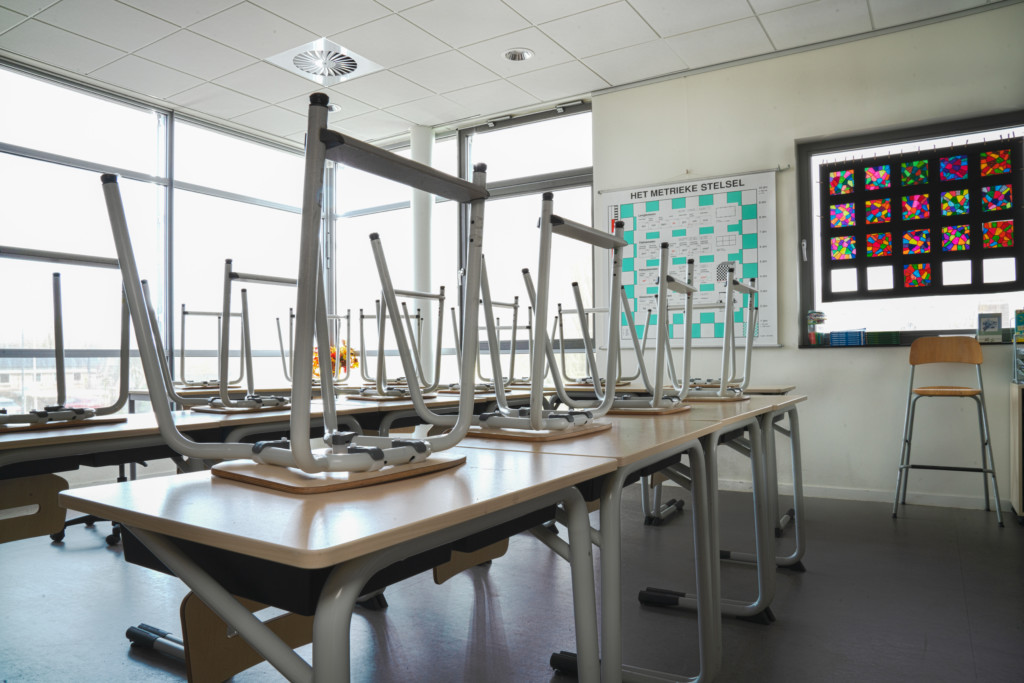 The House Select Subcommittee on the Coronavirus Crisis on Aug. 6 held a public hearing on “Challenges to Safely Reopening American Schools,” featuring former U.S. Secretary of Education Arne Duncan; Caitlin Rivers, a senior scholar at the Johns Hopkins Center for Health Security; Broward County (Florida) Public Schools Superintendent Robert Runcie; and Angela Skillings, a second-grade teacher in the Hayden-Winkelman Unified School District in Arizona. You can see their prepared testimony here, here, here and here. redefinED guest blogger Dan Lips, a visiting fellow with the Foundation for Research and Equal Opportunity, also participated. The following is Lips’ condensed spoken testimony.
The House Select Subcommittee on the Coronavirus Crisis on Aug. 6 held a public hearing on “Challenges to Safely Reopening American Schools,” featuring former U.S. Secretary of Education Arne Duncan; Caitlin Rivers, a senior scholar at the Johns Hopkins Center for Health Security; Broward County (Florida) Public Schools Superintendent Robert Runcie; and Angela Skillings, a second-grade teacher in the Hayden-Winkelman Unified School District in Arizona. You can see their prepared testimony here, here, here and here. redefinED guest blogger Dan Lips, a visiting fellow with the Foundation for Research and Equal Opportunity, also participated. The following is Lips’ condensed spoken testimony.
As we have heard today, communities across the country are facing a difficult decision about how to begin the school year during the pandemic. The prospect of any child, teacher, or school employee contracting COVID-19 and facing the possibility of death or serious illness should weigh heavily on all policymakers involved with decisions affecting schools’ plans.
But it is critical that policymakers also recognize the serious risks associated with prolonged school closures, particularly for disadvantaged children.
Researchers studying the educational effects of school closures warn that time out of school results in months of lost learning, and that the learning losses are most acute for low-income students.
The bottom line is that prolonged school closures will create a large achievement gap for a generation of American children. Beyond these educational effects, prolonged school closures create significant risks for children’s health and welfare.
There is alarming evidence, which I describe in my written testimony, that prolonged school closures since the spring have endangered child welfare. Closures also have significant negative economic effects for parents. Many parents have been forced to choose between their jobs and their child’s care, and this challenge is most difficult for single parents.
The good news is that it is possible for schools to reopen.
Health experts — including the American Academy of Pediatrics — have issued guidelines for safely reopening schools with certain precautions, such as physical distancing, utilizing outdoor space, cohort classes to minimize crossover among children and adults, and face coverings for students (particularly older students).
And we are seeing many school districts choose to reopen across the country with in-person instruction or hybrid learning options.
According to a new analysis from the Center for Reinventing Public Education, 41 percent of rural districts and 28 percent of suburban districts plan to provide in-person instruction this fall. But most the nation’s largest school districts are not reopening with in-person instruction.
Seventy-one of the nation’s 120 largest school districts are beginning the school year with remote instruction and no in-person learning, based on FREOPP’s review. Altogether, these closed school districts serve more than 7 million children — including 1.4 million children living in poverty.
It is important to recognize that children from low-income families have fewer resources to learn outside of school than their peers. According to one estimate, rich families spend more than $9,000 out of pocket on their children’s educational and enrichment outside of school, while the poorest families spent just $1,400.
Today, families with financial means are working to create better options than remote learning — including homeschooling and setting up “pandemic learning pods” by forming coops with other parents and hiring teachers or tutors. But children from lower-income families have few options. Policymakers must address this inequality.
For example, states should use existing CARES Act funds to provide aid directly to parents in the form of education savings accounts or scholarships to support their children’s outside of school learning needs. Oklahoma, New Hampshire, and South Carolina are already doing this. Other states should follow their lead.
As Congress considers future aid packages for K-12 education, you should provide aid directly to parents to help disadvantaged children learn when their school is closed. There is precedent for providing emergency education relief in this manner.
After Hurricane Katrina and Hurricane Rita in 2005, many children were displaced and had nowhere to go to school. Congress provided more than $1 billion in aid that followed affected children to a school of their parents’ choice, allowing them to continue their education.
If millions of children are unable to attend school this year, Congress should focus much of its aid in a similar manner — providing direct assistance to help children continue learning while schools are closed. In my written testimony, I discuss these and other recommendations for how school systems can prioritize and address the needs of disadvantaged children during the pandemic.
Since 1965, Congress has rightly focused federal education aid on promoting equal opportunity for at-risk children. In 2020, this will require focusing aid to support disadvantaged kids who can’t go to school.
The Foundation for Research and Equal Opportunity will host an executive briefing on its recommendations for reopening and continuing American education during the pandemic on Thursday. Visit https://freopp.org/ for details.


